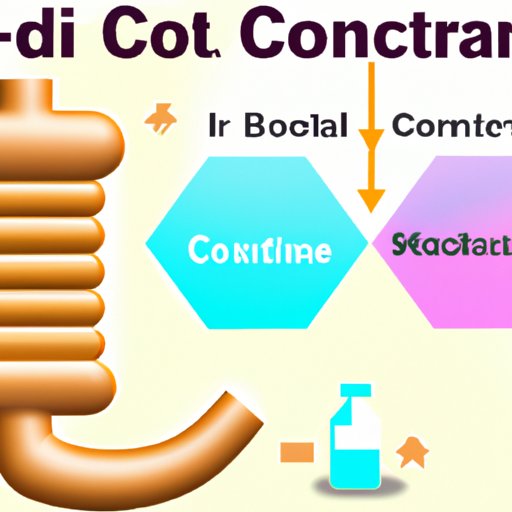Introduction
Colonic irrigation, also known as colonic hydrotherapy or colonic therapy, is a form of alternative medicine that involves the cleansing of the large intestine with water. It is sometimes used to treat digestive issues such as constipation, bloating, and gas. While it is generally considered safe, there are potential risks and complications associated with the practice. In this article, we will explore how a colonic works, its potential benefits and risks, and the preparation process for the therapy.
How Does a Colonic Work?
The process of colonic irrigation typically begins with a consultation between the patient and the therapist. During this time, the therapist will take a full medical history and discuss any health concerns or medications the patient is taking. Once the consultation is complete, the therapist will explain the procedure and answer any questions the patient may have.
What Happens During a Treatment?
During the treatment, warm filtered water will be slowly introduced into the large intestine through a sterile tube inserted into the rectum. The therapist will use a special device to control the flow and temperature of the water. As the water enters the colon, it will help to soften and break down accumulated waste matter. The therapist will then use gentle massage techniques to help stimulate the release of the waste.

Examining the Equipment Used for Colonic Irrigation
The equipment used for colonic irrigation is specially designed to ensure the safety and comfort of the patient. The tube used for insertion is made from medical-grade materials and is single-use only. The device used to control the flow and temperature of the water is equipped with sensors that allow the therapist to monitor and adjust the settings as needed. All of the equipment is sterilized before each use to minimize the risk of infection.

Exploring the Benefits of Colonic Therapy
Colonic therapy has been touted as a way to improve a variety of health conditions, including digestive complaints such as constipation, bloating, and gas. According to one study, colonic irrigation can also reduce symptoms associated with irritable bowel syndrome (IBS), an intestinal disorder that causes abdominal pain, cramping, and changes in bowel habits.1 Additionally, some people believe that colonic therapy can help to detoxify the body by removing toxins and impurities from the digestive system.
Investigating the Risks Associated with Colonic Therapy
While colonic therapy is generally considered safe, there are potential risks and side effects associated with the practice. Common side effects include cramping, bloating, nausea, and fatigue. Additionally, there is a risk of dehydration due to the loss of electrolytes during the procedure. There is also a risk of infection if the equipment is not properly sterilized. More serious complications, such as perforation of the large intestine, can occur but are rare.

Preparation Process for Colonic Therapy
To prepare for a colonic therapy session, it is important to follow the instructions provided by your therapist. This typically includes dietary guidelines such as avoiding certain foods and beverages before the procedure. You should also discuss any medications you are taking with your therapist as some medications can interfere with the effectiveness of the treatment.
Choosing a Qualified Colonic Therapist
When choosing a qualified colonic therapist, it is important to do your research. Make sure to ask about the therapist’s credentials and experience. You can also ask for references from past clients. Additionally, find out what type of equipment the therapist is using and inquire about their sterilization practices.
Conclusion
Colonic irrigation, also known as colonic therapy, is a form of alternative medicine that involves the cleansing of the large intestine with water. It is often used to treat digestive issues such as constipation, bloating, and gas. While there are potential benefits associated with the practice, there are also risks and side effects that should be considered. To ensure the safety and effectiveness of the treatment, it is important to choose a qualified colonic therapist and follow the preparation guidelines provided by the therapist.
(Note: Is this article not meeting your expectations? Do you have knowledge or insights to share? Unlock new opportunities and expand your reach by joining our authors team. Click Registration to join us and share your expertise with our readers.)
